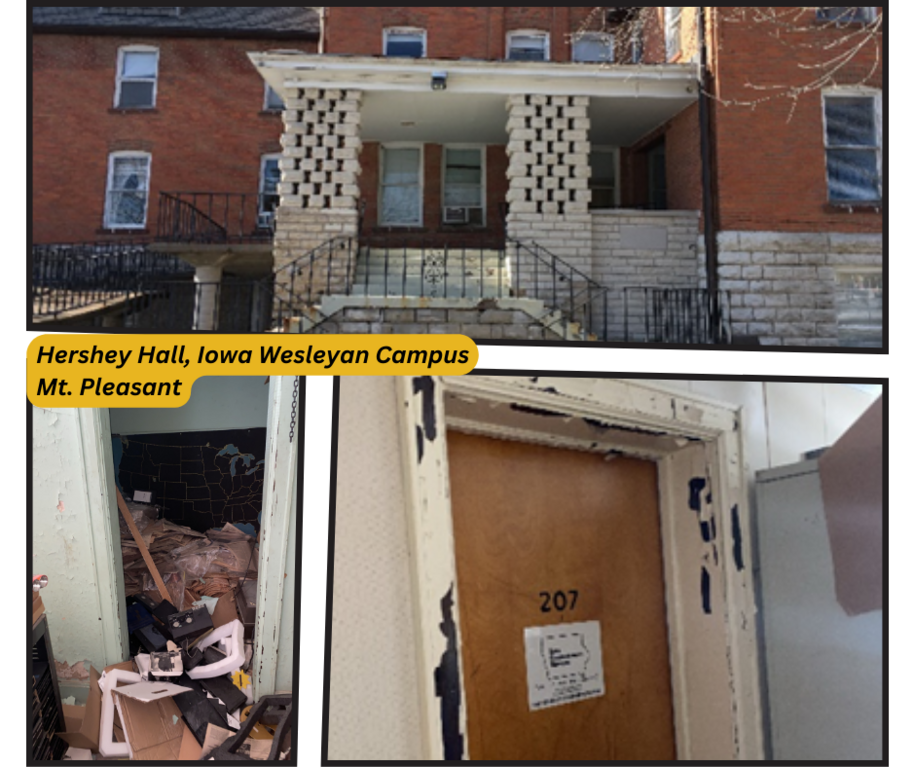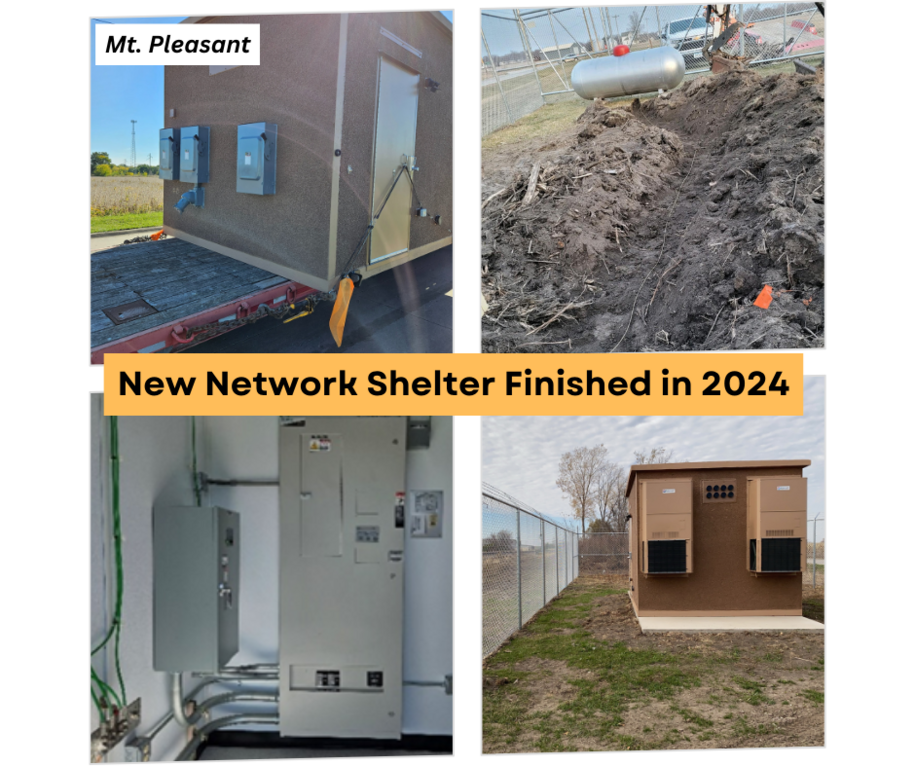Moving Network Equipment from the Iowa Wesleyan University to a new Secure Shelter
A complex situation is an understatement when a large-scale Network site move is being coordinated. Our Facilities team took notice back in March 2023, when the closure announcement of Iowa Wesleyan University, the 181-year-old private college in Mt Pleasant, made headlines. The reasoning for the interest was that this private college served a greater Network purpose statewide for other critical communications services provided by the ICN.
Housed on campus in an equipment room in Hershey Hall, also called a FOTS room (fiber-optic transmission system), was the ICN’s Network equipment. This location is one of the original Part II sites for the Network, and dates back to the early 1990s. These state-owned sites were included in the initial fiber build-out, and created a Network point of presence in many Iowa counties.
As the university board proposed liquidating assets including the sale of campus buildings, ICN began looking for a site to relocate the Network equipment. This included the possibility of staying in Hershey Hall. After reviewing the conditions of the Hershey Hall building, it was discovered that the outside of the building looked solid, but the interior lacked the same hardiness and reliability. There was construction debris, an indication of some vandalism on the inside upper floors, and the walls appeared to be crumbling. In addition to this, the door to our equipment room needed security enhancements to maintain the security of the Network.

A More Secure, Stable Shelter
Following a thorough evaluation of Hershey Hall, it was a clear that a new structure was needed to secure ICN’s Network equipment. After months of planning and searching for an alternative site, ICN purchased a small area of land located close to the fiber path, with approval received from the Mt Pleasant City Council during their August 2023 council meeting.

The magnitude of relocating a site is enormous. Like every project, collaboration is key between employees, vendors, and other external stakeholders. This project was completed in different phases beginning with receiving power from the local coop, boring fiber to the new location, pouring the foundation, installing a new equipment shelter, migration of ICN’s Network equipment, installing temperature controls in the new facility, and connecting a backup generator to the shelter. With all of those steps completed, the new Part II site was officially active on January 17, 2024 at 4:30 AM. This marked the completion of the relocation project, which was accomplished in less than a year.
Relocating Sites and Their Importance
There has been an uptick for site relocations, with this project being the 4th move of 9 for the ICN since 2021. Many may ask why the increase? Each of the sites had unique reasons. Some were necessary because of remodels and additions to the locations that put ICN’s assets in the way requiring a move. Other moves were required because of consolidations due to financial constraints post COVID, and in two cases our customers closed down. Iowa Wesleyan was one of the sites that closed.
Many of the Network’s Part II sites provide connectivity to healthcare locations, public safety answering points for 911 services, K-12 educational sites, colleges, universities and armories to name a few. Several of these locations have HVAC systems, which are frequently physically tested and remotely monitored. In addition, we have battery backups, cooling equipment, generators, smoke and heat sensors, and environmental alarms. The ICN has been essential in establishing connections between rural communities and encouraging technological cooperation to ensure resource access over the years.
There are many comparable Part II sites throughout Iowa that provide a similar connection as the Iowa Wesleyan site did. Included in the original network construction, these locations were linked to broaden the educational video network and served as the primary hub for numerous counties throughout the State. The Part I and Part II sites serve as the backbone of our Network and connect other community sectors in the public safety, health, and government sectors.
- Health related field offices have the need to connect back to regional locations and specialists for health records, training, and consultation.
- Government and public safety offices are connecting to databases and applications administered by host agencies.
- Connections to State and Federal initiatives such as Statewide Land Mobile Radio and FirstNet essential for establishing connectivity to promote a safer community.
The digital landscape is constantly evolving and growing just like the demand on these original sites. Our customers now require more bandwidth, hosted applications, and security due to the advancement of technology. Ensuring the stability and security of the enclosed structure housing the hardware and network equipment is of utmost importance. The Network still counts all sites as a significant partner.
---
The Parts of the Network
- Part I: State Owned Site – The initial buildout of the Network. This build-out provided the three Iowa Regents universities, 15 community colleges, Iowa Public Television, and the State Capitol Complex with fiber-optic connections. This part of the Network is owned by the State of Iowa. The customer owns the building that holds the equipment.
- Part II: The fiber build-out created a Network point of presence in the remaining 84 Iowa counties. These sections of the Network are also owned by the State of Iowa. The customer owns the building that houses the equipment.
- Part III: The connections to other authorized users throughout the State, such as libraries, area education agencies, etc. The customer owns the building that holds the equipment.